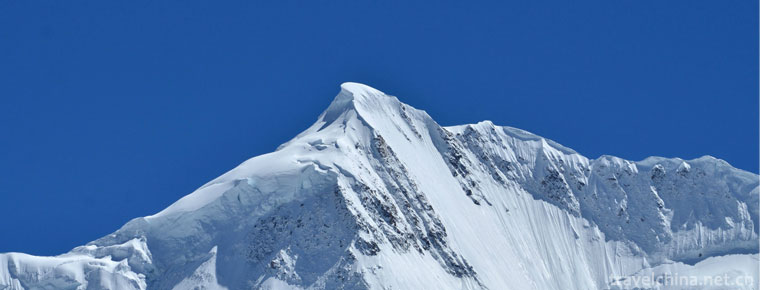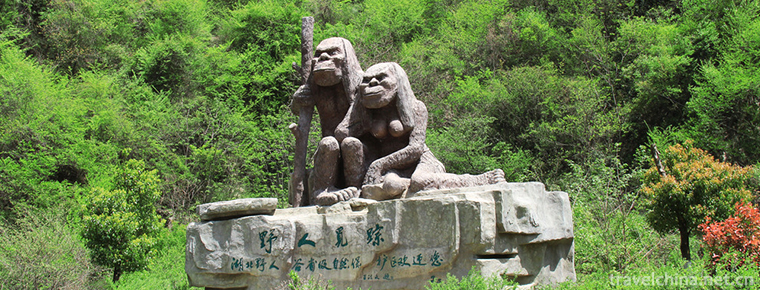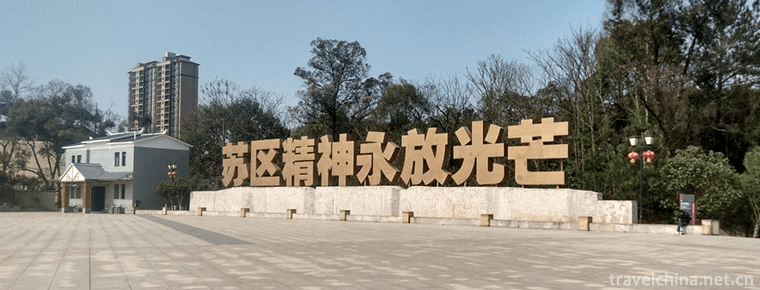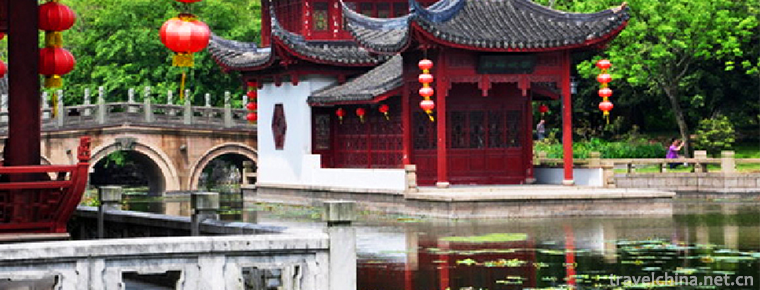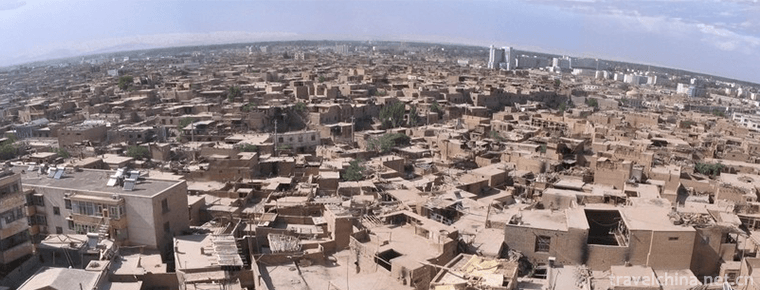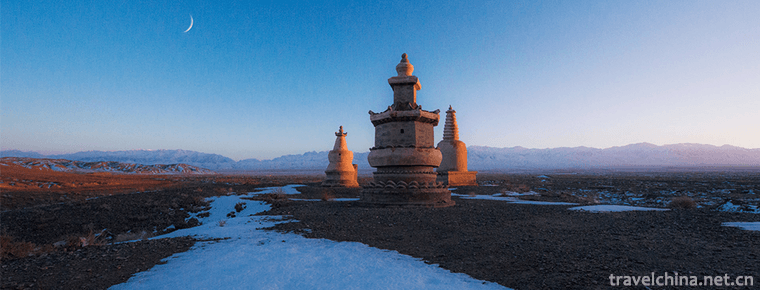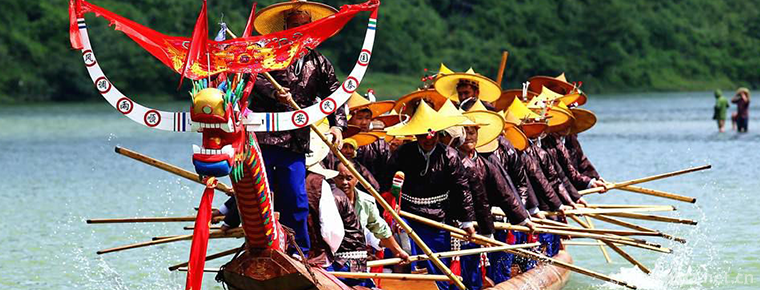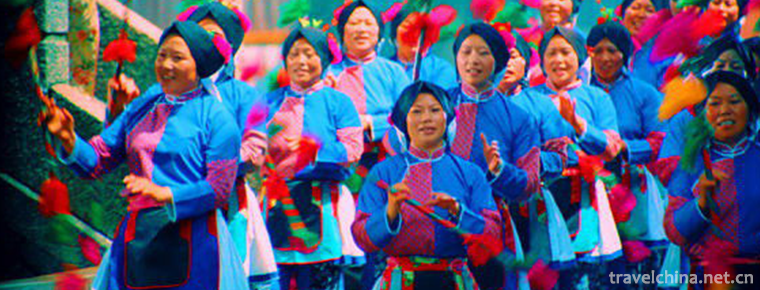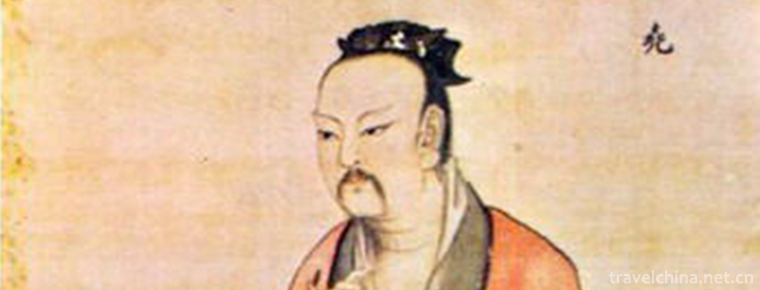Qi baishi
Qibaishi
Qi Baishi (January 1, 1864 - September 16, 1957), formerly known as Zhi Zhi, the word Wei Qing, No. Lanting Pavilion, later renamed Huang, the word is on the edge, the number of Bai Shi, white stone mountain, old Ping, hungry old man, borrow the mountain chant host, Ji Pingtang on the old man, three hundred lithograph millionaire, ancestral home Anhui SuzhouDangshan Born in Changsha, Hunan Xiangtan (now Xiangtan, Hunan), a master of modern Chinese painting and a celebrity of world culture.
He worked as a woodworker for a living in early years, and settled in Beijing after he was fifty-seven years old. He is good at drawing flowers, birds, insects, fish, mountains and waters, and figures. Rich and colorful Bright and styling Succinct Vivid and artistic conception simple. The fish, shrimp, crab and crab are very interesting.
Qi Baishi's calligraphy and seal script was written in the tablet of Qin and Han Dynasties, and the book was bold and interesting. Previous appointment China Central Academy of Fine Arts Honorary Professor, Chinese artists associationChairman and other posts. The representative work is " The sound of the frog rises ten miles out of the mountain spring. " Black shrimp And so on. Author of Bai Shi's poetry and grass " Bai Shi old man himself And so on.
Life experience
Qi Baishi was born in January 1, 1864 (the twenty-two day of winter 1863) in the year of the lunar calendar. HunanChangsha Prefecture Xiangtan White stone shop Xingzi dock star pond. Name Zhi Zhi, the word Weiqing, also the word Lanting Pavilion. At the age of 27, he was renamed "Huang", "Sheng Shi" and "Bai Shi Shan".
In 1870, he read books from his grandfather, Zhou Yuruo, and used books and books to draw pictures.
In 1878, we learned from the beauty of Zhou to learn carpentry carpentry. In addition to carpentry, the book is broken.Mustard Garden "Teacher", "flower bird" and "figure painting".
In 1888, Xiao Xiang, a folk artist, was taught to paint a portrait.
1889, worship Hu Qin yuan , Chen Xiao Fan In order to learn poetry and literature, Hu Qin yuan helped him out of woodworking life, specialized in painting, and served as a portrait to support his family.
In 1894, Wang Zhongyan and other seven people formed "Longshan poetry club" and was elected president. After and Li Song an Wait for "Luoshan Poetry Society" to recite poems, paint pictures and engrave stones.
1899, visiting Xiangtan celebrities Wang Yun Yun Learning poetry for teachers. In the same year, the first set of printed copies, "Ying Yuan Yin Cun", was printed and printed respectfully. Huang Yi The rules are precise and can be random.
In 1900, he lived in the Mei Gong shrine under lotus peak, calling himself "the plum plum bookstore" and building a small house in the courtyard. Devoted to painting and poetry.
In 1902, at the invitation of Xia Wu he went to Xi'an to teach paintings. In 3 months in Xi'an, she went to Beijing with Xia Wu Jie and traveled to Huayin and Hong Nong run. When he met Fan Fanshan in Xi'an, he was willing to recommend Qi Baishi to empress dowager Ci Xi as a servant of the court. He was willing to donate a county magistrate to him.
At the turn of spring and summer in 1903, they returned home in Tianjin, Shanghai and Hankou. In the following spring and autumn, Wang Xiangqi and Zhang Zhongbiao traveled to Nanchang, Jiujiang and Mount Lu.
1904, with Wang Yun Yun To Jiangxi, to visit Mount Lu, Nanchang and other places, to publish "white stone grass and gold and stone inscription", Wang Kaiyun prefaces.
In 1905, he went to Guangxi to visit Guilin. and Cai E , Huang Xing Acquaintance.
In 1906, after the Spring Festival, Guo Baosheng went to Guangzhou from Wuzhou to teach her paintings in Qinzhou. A look at Guo's possession Xu Wei The eighth and the golden peasant famous authors. Work hard to paint, often Guo Dai pen. Autumn, back to Xiangtan, in order to draw salaries to buy old houses and dozens of acres of paddy fields.
In 1907, at the turn of spring and summer, we will go to Qinzhou again. Zhaoqing Duan Xi.Winter, back Xiangtan.
In 1908, we went to Guangzhou in spring. It was only a few days after returning to Xiangtan, and the rest of the time was spent in Guangzhou.
In 1909, Guangzhou After the Spring Festival, I'll go to Qinzhou. Early summer ShanghaiTo sell pictures for a living. Traveling between summer and autumn, Suzhou. Visit Li Meian in Nanjing and print the three party.In October, he returned to Xiangtan to end the "five out of five return" excursion. Later, he repaired "Ping Ping Tang" in his hometown and began to live in the mountains for 8 years. For the eight great mountain people and Shi Tao's flower and bird paintings, the brush is more succinct, but the grass and insects are sketching and working. Calligraphy is the essence of Jin Nong.
In 1917, he went to Beijing to avoid bandits. Catching up " Restoration of Zhang Xun "Haste to Tianjin for refuge. The situation is somewhat fixed and returned to Beijing. During this period, I had a close contact with my old friend Fan Fanshan, Xia Wu Jie and Guo Baosheng. And get to know chen shizeng , Yao Da Fu , Chen banding And so on. Chen Shiceng and Qi Baishi had great influence on his later years. It is winter, leaving Beijing to return to Hunan, and a year in the countryside.
1919, and Hu Bao Zhu He married and settled in Beijing ever since.
In 1923, Chen Shiceng died in Nanjing. Several times he wrote poems to mourn his friends. In 1925, in spring, a serious illness was unknown to seven days and nights. Stay in bed for more than a month, stop painting and engraving. Mei LanfangFormally apprentice to learn painting. (right picture - Qi Baishi twenty-four Shimen map Atlas: )
In 1926, mother and father died one after another. Twice stop painting and engraving.
In 1927, Lin Feng Mian I am invited to teach at Beijing art college.
Printed in 1928. Bai Shi's poetry and grass " Borrowing poems from the mountains(handwritten Photocopying)
In 1933, he printed "Bai Shi's poem grass" (eight volume lead print).
In 1936, I traveled to Sichuan. Acquaintance in Sichuan Huang Bin Hong.
In 1937, I heard from Changsha Shu Yi on fortune telling. Practise deception Law, 77 years old. In July of the year, Beiping fell into a state of grief and indignation.
In 1940, in the first month of the lunar year, Chen Junchun, the wife of his wife, died. In order to resist the harassment of Japanese aggressors and traitors, they put up a confession of "paintings not for sale and official", and declined to see visitors.
January 1944, the second wife Hu Bao Zhu Die. In June, he rejected Beiping art school's coal rationing.
In 1946, after the end of the war of resistance against Japan, he again hung up rung in Liulichang and resumed the engraving of paintings. In October, when he went to Nanjing and Shanghai to hold an exhibition of paintings, all more than 200 paintings were sold, bringing back a bundle of "French coins", like waste paper, which could not buy 10 bags of flour.
In January 1949, Peiping was liberated. participate in Zhou Enlai The prime minister hosted the banquet. by Mao Zedong Lithography two party. To serve as China Central Academy of Fine Arts Honorary professor.
He was hired in 1950. Central Museum of history Librarians. In April, Mao Zedong and I had dinner together. Zhu De Accompany. In October, Mao Zedong presented the eagle and seal script couplet "sea for Dragon World" and "cloud is crane home" at the age of 82.Participated in the "Beijing Korean painting and calligraphy exhibition". Winter, for " People's daily "Draw" Peace dove In February 1951, more than 10 paintings took part in the "Shenyang Korean painting and calligraphy exhibition".
In 1952, he spent three days to create two huge white flowers and peace doves for the Asia Pacific peace conference in Beijing. In the same year, he wrote many works entitled "peaceful victory" and "long live peace".
In January 7, 1953, more than 200 people from the Beijing cultural and arts circles took part in the celebration of Qi Baishi's 90 th birthday. The Ministry of culture awarded Qi Baishi an outstanding performance. People artists Title. Zhou Enlai attended the evening celebration. He was elected chairman of the Beijing Chinese Painting Research Association in October.Chinese artists association The first president of the Council.
In April 28, 1954, the Chinese Artists Association The Palace Museum The "Qi Baishi painting exhibition" was held in August and was elected deputy to the National People's Congress. In September 15th, he attended the first National People's Congress.
June 1955, and Chen banding , first woman to join the Tongmenghui And so on, the 14 artists cooperate for the world peace conference. Ode to Peace "
In April 27, 1956, the world peace council announced the award of Qi Baishi's international peace prize. In September 1st, the prize giving ceremony was held in Beijing.Premier Zhou Enlai personally presented congratulations.
In May 15, 1957, he served as Beijing. Chinese Academy of painting Honorary president. 5--6, the last work, the peony. In September 16th, Beijing The hospital passed away. On the morning of September 22nd, he held a public memorial at the Jiaxing temple, and Premier Zhou Enlai and other central leaders attended the public memorial ceremony.
In 1963, Qi Baishi was selected as one of the ten famous cultural celebrities in the world. (Annotated: Internet confirms that there are no ten famous cultural celebrities in the world, Qi Baishi, the ten famous cultural celebrities in the world. Confucius , Plato , Aristotle , Copernicus , Newton , Darwin , Bacon Aquinas, Voltaire , Kant ).
Painting theory
Essentialism
After Qi Baishi settled in Beijing, his heart was "the hometown of mountain flowers at this time," also the ideological track. Qi Baishi could not drive her home and grass to Beijing, but his hometown vegetation came to Beijing with Qi Baishi as a natural message and translated into artistic information to achieve Qi Baishi's psychological balance. Qi Baishi carved a lot of idle printed letters, such as "my home Hengyue mountain" and "the moonlight of guests in the mountains". This is the first theme of Qi Baishi's self expression. Qi Baishi wrote a lot of homesickness poems, such as: "when you climb high, you almost think of the countryside, you drink more flowers, and you break your heart." It is also like "full spectrum of worldly flavour, Night Dream Star pond", "this is the plum blossom opening, the old eaves before flowers", these poems are Qi Baishi's "night sleepless" and "pillow worry". Change and change, change and change. The heart of the countryside is always accompanied by childlike innocence and childlike innocence.
Qi Baishi's works I know fish best. Painting the little fish around the bait is Qi Baishi's habit of "knowing fish". When Qi Baishi was 77 years old, he painted "pig slaughtered" because Qi Baishi had a heart of "seventy years of remembrance"; Qi Baishi painted those black dragonflies and red beetles, because Qi Baishi still remembered that the villagers called the black Dragonfly as "black lady", called the little beetle as the "Red Lady", which is the grass worm in the eyes of farmers and the aesthetic taste of the peasants. "
The works of Zhong Kui, Shou Xing and Xian Fu written by Qi Baishi are also the objects on the lips of farmers when chatting. This kind of work is a natural revelation of Qi Baishi's love town complex and childlike innocence. It is a desire to "spread our children by means of agricultural products," and is a conscious expression of farmers' consciousness which is different from the "book of poetry". When Qi Baishi painted "cabbage peppers", he not only felt the contrast between red and black, but also resentful for "peony is the king of flowers, the lychee is the fruit first, and the cabbage is the king of the dish". Qi Baishi's expression in the sentence about cabbage painting is "not alone, but it is always the farmer". "Not only Lao Ping knows this flavor, but the three generations of the ancestors bite their roots" is exactly the confession of the old farmer in the farming map. It is Qi Baishi's self affirmation that does not conceal his true nature and nature.
Qi Baishi never had any desire to enter the official career. He was too lazy to be sociable. No matter what he did, he had nothing to do with the world. He always immersed himself in the experience of art with a pure heart and immersed himself in the hometown of art. The heart of Qi Baishi, the childlike innocence and the heart of farmers and the local flavor of art stem from Qi Baishi's work life. Qi Baishi had also lost his way in art, which was the inevitable fate of a false attack on the emotions of the eight great mountain people. In essence, it was the conclusion that Qi Baishi's mentality was not compatible with the literati of the past. When Qi Baishi identified himself as a farmer, the natural information stored in the past years ran to the bottom of his wrist, tongue end and blade, and turned into new artistic information. He abandoned the artistic means of expressing emotions by the ancients, and created artistic language and artistic form expressing Qi Baishi's special feelings. The sincerity of Qi Baishi's heart, childlike innocence and peasant's heart is the artistic expression of Qi Baishi's sincerity and essence. Qi Baishi's profound essence of Qi Baishi's "declining years reform" is based on the essence, self, reform, change and artistic expression.
Modeling theory
Each modeling artist has his own aesthetic scale. When Qi Baishi painted morning glory, the leaves were all positive, and the flowers were all side view. The flower buds were straight like red candles. This is the unity of local consistency and overall momentum, and the characteristic of modeling. and peony The bright colors of the flowers, the charm of palm trees, the toy style of tumbler, the round shape of the cow, the long and narrow shape of the side shrimp, the eyes of the owls, such as the bearing structure, are related to the physical shape and the way of the painter's feelings. Qi Baishi's ability to depict fine grass insects is related to the skills of folk craftsmen 'showing off skills. The appearance of those coarse brush branches and fine grass insects in the same picture reflects the beauty of contrast. This beauty is determined by the complexity of Qi Baishi's dual personality of farmers and literati.
Qi Baishi's famous painting language about modeling -- "painting between the beautiful and the like is too much like a kitsch, not like being bullied". It is not only Qi Baishi's modeling view, but also Qi Baishi's aesthetic interest in communicating the secular and literati in the whole artistic style. It is neither in favor of kitsch nor in the middle of choice. Like the Qi Baishi's view of "equality and alignment", the modeling interest of "likeness and non resemblance" is the form and aesthetic boundary that the artist can choose to create at the two extremes, which is both highly skilled and minimalist. In the late years, Qi Baishi's increasingly simplified style of painting strengthened the "likeness" style and strengthened the dominant position of "God". Qi Baishi's "confused" stroke in the last year of his life is also a rare confusion in art and a breakthrough. Regular script The best way to dominate the artistic image is to have the same style of writing.
Constitution theory
Strengthen the expressive power of color and contrast black as a color and other colors. Shanghai style The artist has made some breakthroughs. Qi Baishi's Shanghai style boldly introduced the aesthetic characteristics of folk art to make the tonal more pure. Qi Baishi retained the characteristics of Chinese painting, mainly based on ink, and set up the backbone of the image. He used bright saturated colors for flowers, fruits and bird worms. Freehand brushwork Flower and bird painting And clay toys. Coloured drawing It forms a new artistic complex. Qi Baishi's works Kingfisher in lotus pond The leaves, safflower and Cui Yu in " Lotus mandarin duck In the "Jiao Ye", deep red flowers, black, yellow, green synthetic color feathers, "good sample" in the ink leaves, Huang Hulu, red ladybug, these are typical Qi Baishi color composition. It belongs to form and content, because it is the refinement of the rural scenery itself, and is a kind of warm nostalgia. When Qi Baishi paints shrimp, he can skillfully use ink and pen marks to show the structure and texture of shrimp. He also depicts shrimp and long arms forceps with rich golden flavor, which makes the structure of pure ink rich and meaningful.
Qi Baishi attaches great importance to the composition of points, lines and planes, so there are many wonderful rules and rhythms of life. When Qi Baishi copied the duck of the eight great mountain people, he changed the album into four feet, and the upper three feet were all lengthways postscript. It had revealed the strange thoughts of Qi Baishi in composition. In the picture of the chick, only three chicks were painted in the bottom 1/5, and the poor ones in the upper left 1/5. The three points echoed with one line, which turned the large space into a living space. In the lotus dragonfly, a longitudinal line of four feet long crossed with a diagonal line of a ruler, and completed the rhyme of autumn thought, which had been simplified to no longer simple. This is Qi Baishi's fantastic structure. In the picture of fish and shrimp, using the parallelism of the same direction causes the rhythm of movement to embody Qi Baishi's thought of composition. The rhythm of "centripetal" in "the little fish comes". The combination of two circles (lotus leaves) and a group of diagonal (FISH) in the lotus group is the trace of Qi Baishi's inner life rhythm. In the works of pine hawk, wisteria and morning glory, Qi Baishi is good at using complex linear changes to create complex melodies. The poem "song" is "Qiu branch, reflection, snake, land, song and dry sky"; painting the rattan sentence "chaos to the very rest to solve", "the old vine is like flies", all of which express the aesthetic feeling of the unique image. A comparison of Nen, Xia and remnant shows that Qi Baishi is good at using ink and ink, and also uses the rhythm and combination of lines to show different atmosphere. This wonderful composition has Qi Baishi's skills, and this unique skill is related to Qi Baishi's unique pursuit of inner beauty. The big line and seven short lines that constitute a seal like book in Chai Rai are provided by the image of wood chaffs. It is the embodiment of Qi Baishi's "hinterland" essence, which is inspired by the desire of using the farm tools to spread my children and grandchildren.
Thinking theory
Qi Baishi's paintings of shrimp, mountains, vegetation, chickens, ducks and worms will be seen as paintings by people with life and emotion. The two chicks in Qi Baishi's "Sun Xiang Hu" are the two children who fight today and make peace tomorrow. The mouse in the work called self is the child who likes weight in life. One leg of the frog was tied to the grass to see how it cried and struggled. It was Qi Baishi's early prank. Qi Baishi's way of thinking in painting and thinking in poetry is the same. In Qi Baishi's poems, he sees the spring rain pear flowers as tears to others, and "if the pear blossoms are sentimental, remember to plant trees together?" Poetry is the same way of thinking. It is not only anthropomorphic, but also a personification of emotion. It is also the spiritual sustenance of Qi Baishi. Especially in small animals such as chicks, frogs, tadpoles, sparrows, rats and so on, Qi Baishi's childlike innocence is the most obvious. Qi Baishi's love for children's life is the most obvious. Qi Baishi's innocence and loveliness are most obvious. In this kind of work, it can be seen that Qi Baishi's folk art kept from his roots is not only anthropomorphic but also full of artistic humor. Qi Baishi realized the mystery.
When Qi Baishi drew the picture of fortune making and chose the opportunity of taking an abacus as an image, the evil intention of "wanting to make money without danger" contained in "benevolence" is more implicit and meaningful than that of God of wealth, cloak and sword and so on. Qi Baishi's perception of corruption in officialdom, with a tumbler as a symbolic image, through the homonym and the fun of satire, is more interesting and profound than directly depicting the image of a corrupt official. Qi Baishi likened the invaders of the invaders to the rampant crabs. He painted the cold birds with the belief that "the spirit is not cold." like the tumbler, it is a wonderful comic thinking. This is Qi Baishi's artistic humor, and Qi Baishi is like the Uighur wisdom star in that era that can not be directly resisted. Avanti That shows a kind of astute.
Painting style
Strong local flavor, simple peasant consciousness and naive romantic childlike innocence, full of aftertaste poetry, are the inner life of Qi Baishi's art, and the lively and bright colors, the strong contrast between ink and color, simple and unadorned modeling and writing, the extreme synthesis of work and writing, the composition of right and wrong, as Qi Baishi's unique artistic language and visual shape, are relatively the external life of Qi Baishi's art. The form of emotional need and the form that it adapts to, and this form reinforces the expression of emotion. The two require each other, produce each other and depend on each other, forming the artistic life of Qi Baishi, that is, the general style of Qi Baishi's art.
On the evening of December 17, 2017, in 2017, Paoli Paoli, the twelve screen of landscape painting in Beijing, started with 450 million yuan. In nearly 70 odd competitions, Qi Baishi ended up with 810 million yuan and a commission of 931 million 500 thousand yuan to become the most expensive Chinese art in the world.
opinion
Qi Baishi argues that art is wonderful. It is similar to "not like it". In the declining years, it formed a unique style of freehand brushwork and traditional Chinese painting. It opened a family of safflower and ink leaves, especially for fruits, vegetables, flowers, birds, insects and fish. It also featured characters, mountains and rivers, and was famous for a while. It shared the reputation of "South Wu Beiqi" with Wu Changshuo. With the integration of Qi Baishi's simple folk art style and traditional literati style, it reached the peak of modern Chinese flower and bird painting. Seal cutting is the first to learn Ding Jing and Huang Xiaosong, then to imitate Zhao, and to take Fahanin; to see the "three Gong mountain tablet" and "Heaven God divine prophecy tablet", the seal law changes again, and the printing wind is magnificent and unrestrained. It is the representative figure of the modern India style evolution period. His calligraphy is widely inscribed on the stone tablets, He Shaoji, Li Beihai, Kim Dong Xin, Zheng Banqiao All of you are famous for Zhuan and running script. Poetry does not seek work. It does not intend to be in the Tang and Song dynasties. The poets wrote four poets. A lifetime of diligence, hard work, self-reliance, and Gao Jie's conduct, especially national integrity. There are more than 30000 paintings, more than three thousand poems, autobiography and Qi Baishi manuscripts and handwriting. Qi Baishi's works are printed repeatedly in various forms.
Characteristic
Qi Baishi was greatly influenced by Chen Shiceng in painting art, and Qi Baishi drew Wu Changshuo's length at the same time. Qi Baishi specialties in flowers and birds, and he is full of pen and ink. But the painting worm is meticulous and meticulous. Qi Baishi also admired. Xu Wei , Zhu Da , Shi Tao , Jin Nong. The shrimp, crab, cicada, butterfly, fish, bird and ink are permeated with the breath of nature. The landscape composition is strange, does not drop the old track, creates the spirit very much, seals the carving only to have the hand eye, the calligraphy is outstanding, is everybody. Qi Baishi's paintings oppose unrealistic dreams. Qi Baishi often pays attention to the characteristics of flowers, birds, insects and fish, and tries to figure out their spirits. Qi Baishi once said: "for all insects, portrayal of birds, to draw their own face. Qi Baishi's questions are very witty and clever. Qi Baishi's two chicks fight for a bug, and the title is "Qi Baishi's Day is calling." A picture of "cotton picture" says: "flowers bloom all over the world, and flowers fall all over the world." "Tumbler diagram" title "autumn fan shaking two sides white, official robe Chu Chu black body."
Draw prawn
Qi Baishi painted shrimp as a painting. Qi Baishi painted shrimp through lifelong observation, trying to express the characteristics of shrimp's form and spirit.
Qi Baishi grew up in the pond and used to play shrimp. He painted shrimp when he was young, and he copied after he was 40 years old. Xu Wei Li Futang and other painters painted by the Ming and Qing Dynasties. When he was 63 years old, Qi Baishi painted shrimp was very similar, but it was not enough to live. He raised several lobster in the bowl and placed it in a painting case. Every day he observed the shrimp painting method, and shrimp became one of the representative artistic symbols of Qi Baishi.
Qi Baishi painted shrimp into the border, showing the group of shrimp swimming in the water. The stout and thick mushrooms are contrasted with the transparent, light and fine prawn of the shrimps, reflecting the maturity of Qi Baishi's painting skills in his later years.
Qi Baishi painted shrimp showed the shape of shrimp, lively, sensitive, alert and alive. It is because Qi Baishi has grasped the characteristics of the shrimp that it is easy to draw. A few strokes, with the depth and shade of ink, show a sense of motion. A pair of thick ink eyes, the middle of the head with a little coke ink, about two light ink, so the shrimp head varied. Hard shell transparent, from deep to shallow. The shrimp's waist, one piece, a continuous number of strokes, formed the shrimp waist rhythm from coarse to fine.
The change of Qi Baishi's pen made the shrimp's waist appear all kinds of heteromorphic state. There are also stooping and crawling. The tail of shrimp is also a few strokes, both elastic and transparent. A pair of forelegs of shrimp, ranging from thin to thick, between two knots, resembling pliers, with open and closed. The tentacles of shrimp are drawn with a few pale ink lines.
Choice: for the shrimp in the water, to show that kind of perspective, Qi Baishi's lines are real and simple. They are simple and appropriate. They are soft, solid and rigid. They are straight and disorderly and orderly.
Social evaluation
Picasso Qi Baishi is really a great painter in China. How amazing the Chinese artists are! Qi Baishi did not paint with ink, but he saw long rivers and fish.
Lang Shaojun: in Wu Changshu After that, Qi Baishi pushed Chinese traditional calligraphy and painting forward step by step, and entered new life blood. Qi Baishi is an all rounder. Qi Baishi gives his works simple and fresh peasant feelings and endows them with new vitality and modernity. Qi Baishi, as an indefatigable pursuer, exemplary in the spirit of creation shown in the struggle for a century.
Yu Qiuyu The earth gives Qi Baishi the highest artistic achievement, and Qi Baishi's character is close to "Heaven interest", peasant like simplicity, childlike innocence. Qi Baishi is a combination of Hunan culture and Kyoto culture. Qi Baishi has deep roots in Hu Xiang culture.
Wang Zhong Qi Baishi's success in art tells us that truth is plain, the essence of art is plain and simple, and that post-modernists are complicating problems. As long as rooted in the people's aesthetic ideals and beliefs rooted in the healthy human nature, there is a strong will to follow the rules of art practice. This is Qi Baishi's most valuable inspiration to Chinese artists in twenty-first Century with his own example.
Disciple successor
There are many disciples of Qi Baishi, among whom are famous. Li Shu Chan , Li Ke ran , Wang Xue Tao , Wang Shu Shi ,Wang casting 9 , Xu Lin Lu , Chen Da Yu , Li Li , Lou Shi Bai , Zhang De Wen , Xiao Long Shi Wait, three sons. Qi Zi Ju Master of drama Mei Lanfang Famous drama critics Xin Fengxia Qi Baishi is also a disciple.
Commemoration of future generations
Former residence of Qi Baishi
Qi Baishi Former Residence Originally known as Qijia old house, star pond old house, Star White House, located in Xiangtan County, Hunan province Baishi Township Xinghuacun star pond, the former residence was built in the Qing Xianfeng years, it belongs to the traditional central Hunan traditional farmhouse building. East facing the west, Mao Mao top, covering 200 square meters. There are three rows in the middle, three in the north and the south, and two in the north. Qi Baishi was born in January 1, 1864 and lived here until 1900 when he moved to the nearby meiganci shrine. In 1986 and 1993, Qi Baishi's former residence was promulgated by the Xiangtan County People's government and the Xiangtan Municipal People's government as a cultural relics protection unit. In 1996, the former residence of Qi Baishi was published by the Hunan Provincial People's government as a cultural relic protection unit. In September 2000, the Cultural Department of Xiangtan County expropriate Qi Baishi's former residence, and restored the display room according to its original appearance. In December 2001, the former residence of Qi Baishi was officially opened to the outside world. The former residence of Qi Baishi and its surrounding attractions have been opened up for the former residence of Qi Baishi in Hunan.
Qi Baishi's former residence is located at the Hutong No. 13, Chai Cai Hu Tong, Xicheng District, Beijing, east of Nanluogu Lane. It is said that this house was the house of the chief minister of the house of the late Qing Dynasty. After the founding of new China, it was purchased by the Ministry of culture as Qi Baishi's residence. During the cultural revolution, the memorial hall was revoked and replaced by the Beijing Academy of painting. Now he is the seat of editorial office of Beijing painting academy and the Beijing Artists Association. The house was built in the middle and late Qing Dynasty. The 13 hospital was only a part of the original house. It was a complete single quadrangle. Facing south, there is a gate (not the original gate) and two rooms.There are three houses in the south, north, East and west of the courtyard, all of which are hard peaks, tiles, ridge ridges and roofs. There is a sparrow in the corridor, and there is a hanging lintel on it, and there are railings on stools. The house is connected by a corner corridor. The north room has three rooms in the East and the west, and three rooms in the south. There are exquisite brick carving patterns in the heads of each room. There are calligraphy and seal carving brick carvings in the galleries of the corridors, and wood engraved couplets on the wooden partition fans in the north room. On the west side of West ear house, the west wall is decorated with four words, "Zi Qi Dong Lai". The brick and wood carvings in this hospital are of great value, in January 21, 1986. Beijing City Dongcheng District Publish Qi Baishi's old residence as Cultural relics protection unit.
Tomb of Qi Baishi
Qi Baishi's tomb is located in the south of Wei Gong Village, Haidian District, Beijing.Wei Gong Village In front of Building 1, on the west side is Qi Baishi's room. Hu Bao ZhuThe tombs of the two tombs stand side by side. After the cultural revolution, Qi Baishi was attacked. Jiang Qing Name curse. Tomb of Qi Baishi The tombstone of Hu Baozhu's tomb was destroyed by the red guards, and the tomb was survived because of its deep burial and firmness. Rebuilt in 1982, the inscription "Tomb of Qi Baishi in Xiangtan" is a disciple of Qi Baishi. Li Shu Chan Heavy books. It is now a key cultural relic protection unit in Haidian District. In April 2002, the Haidian District government repaired the cemetery and built an iron fence. There is a dwarf around the grave. Cypress. But the original tombstone has disappeared, and the tombstone of common stone has been set up again.
Now the location of Qi Baishi's tomb is Wei Gong Village The northwest corner of the eastern district. North is Wei Gong Village Road. The west is the inner channel of the district. Residential buildings in the South and East are 5 stories.


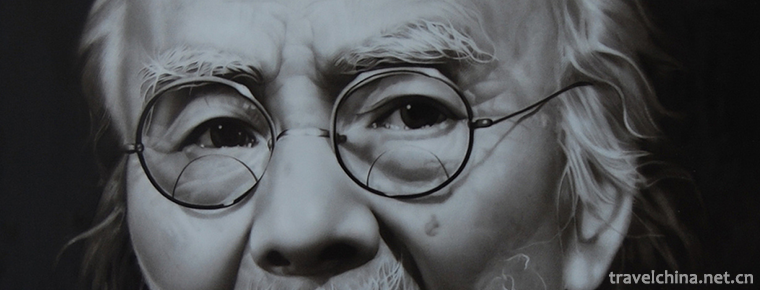
-
Shennongjia Forestry DistrictHubei Shennongjia
Shennongjia Forest District, referred to as Shennongjia for short, was established in 1970 with the approval of the State Council and directly under the jurisdiction of Hubei Province. .
Views: 234 Time 2018-10-28 -
PRC Cradle Scenic
Cradle Scenic Area of Ruijin Republic, National AAAAA Tourist Scenic Area, National Key Cultural Relics Protection Unit, National Patriotic Education Demonstration Base, National Red Tourism Classic S.
Views: 196 Time 2018-12-08 -
The Grand View Garden Area of Shanghai
Shanghai Grand View Garden is located at 701 Qingshang Highway, Qingpu District, Shanghai. It is situated on the west side of Dianshan Lake, 65 kilometers away from downtown Shanghai..
Views: 150 Time 2018-12-19 -
Drifting in Baotianbang Canyon
Baotianbang Canyon Drifting Scenic Area is located in Neixiang County, Nanyang City, Henan Province, which is an excellent tourist city in China. Baotianman is the only World Biosphere Reserve in Hena.
Views: 150 Time 2019-01-02 -
Old city of Kashi
The old urban area of Kashgar City in Xinjiang is like a living cartoon of Xinjiang Uygur folk customs. The old urban area of Kashgar is located in the centre of Kashgar.
Views: 178 Time 2019-01-29 -
Sunan Wenshu Temple Scenic Spot
The Sunan Wenshu Temple scenic spot is located at the foot of the Suzhu Chain, the main peak of Qilian Mountain in Sunan County, Gansu Province. It is a national key cultural relic protection unit and.
Views: 169 Time 2019-02-13 -
Danzhou tune
Danzhou tune is a traditional folk song which only spreads in Danzhou of Hainan Province and has a unique regional style. It is sung in Danzhou dialect with a lively rhythm.
Views: 117 Time 2019-04-25 -
Miao Dragon Boat Festival
Every year from May 25 to May 27 of the lunar calendar, the Miao people living in Shibing and Taijiang counties of Guizhou Province along the Qingshui River hold this grand gathering. The Dragon Boat .
Views: 128 Time 2019-06-05 -
Womens clothing in Yongzhishui Townshi Suzhou
The women's clothing in Yongzhishui Township, Suzhou, is an outstanding representative of the Han nationality's clothing. It is a typical and representative clothing of the working people in Wu area. .
Views: 271 Time 2019-06-17 -
Legend of Yao
The legend of Yao is one of the local folklores in Jiangxian County, Shanxi Province. Yao is the Saint King of ancient Chinese legend. It is said that later generations named him Tao Tang and surnamed.
Views: 68 Time 2019-07-11 -
Suining hydrology
There are many small and medium-sized rivers in Suining City. There are 15 rivers with drainage area of more than 100 square kilometers in Suining City, including Fujiang River, Qiongjiang River, Qijiang River, Zijiang River, Qinggang River and Pengxi River. .
Views: 333 Time 2020-12-16
